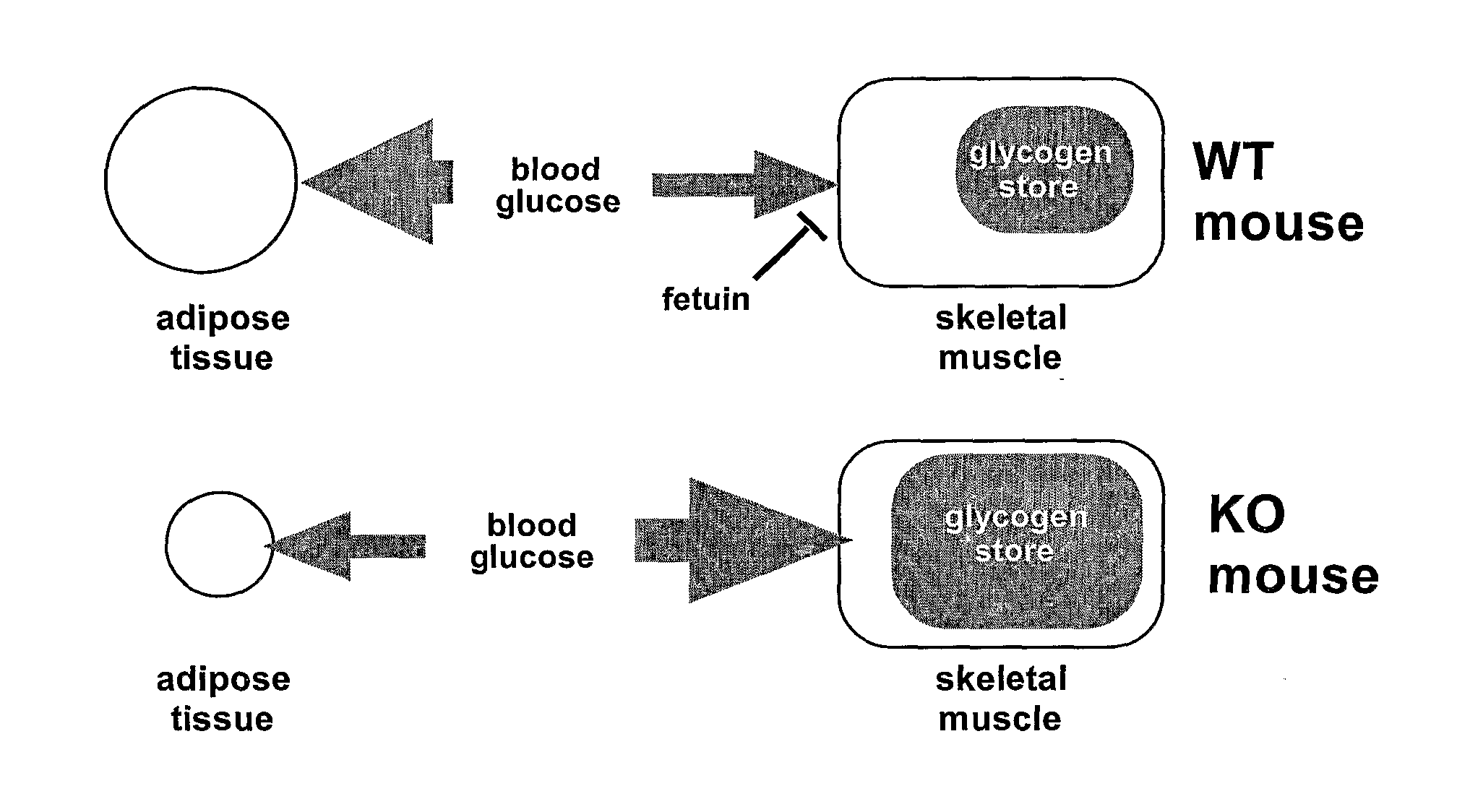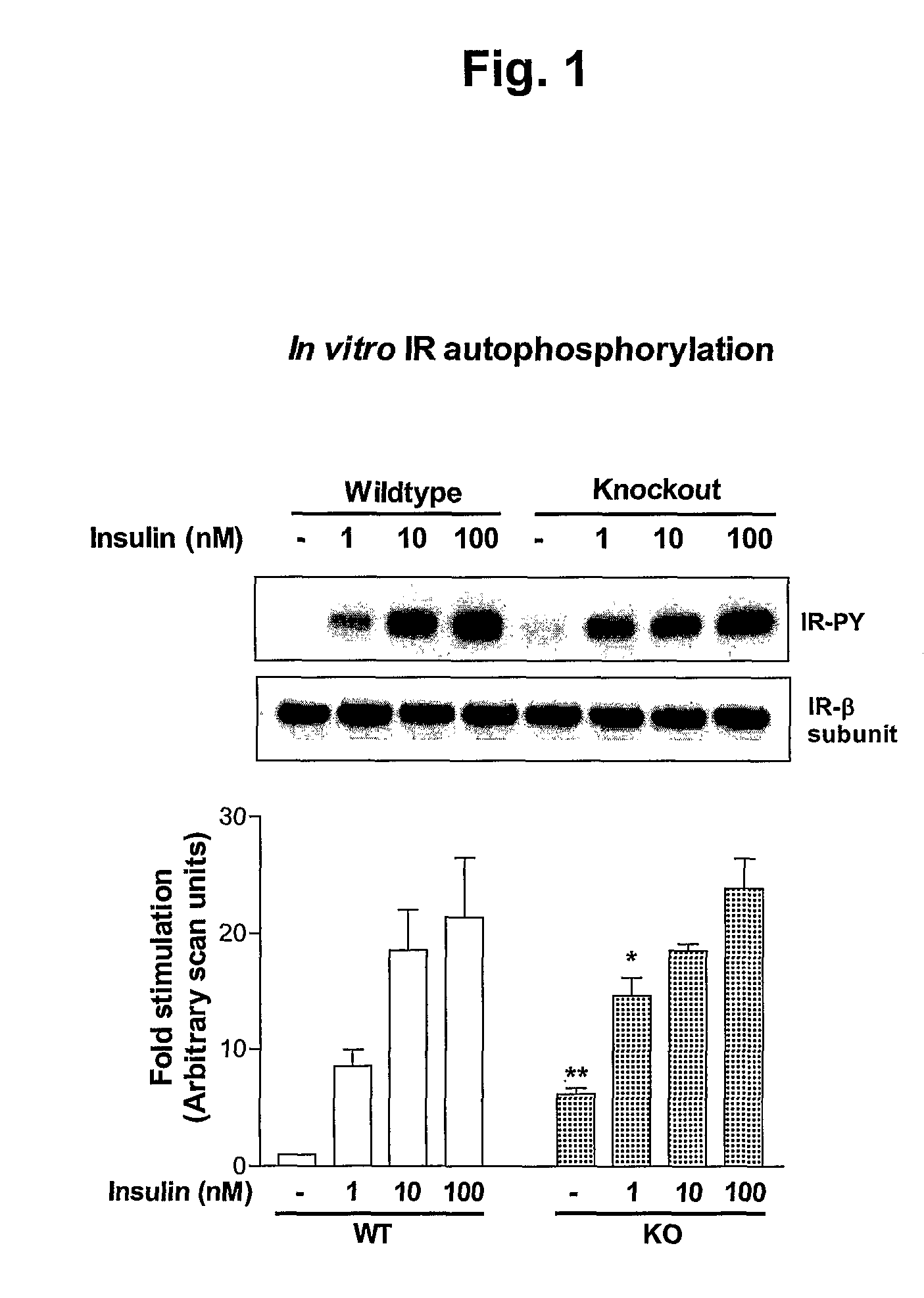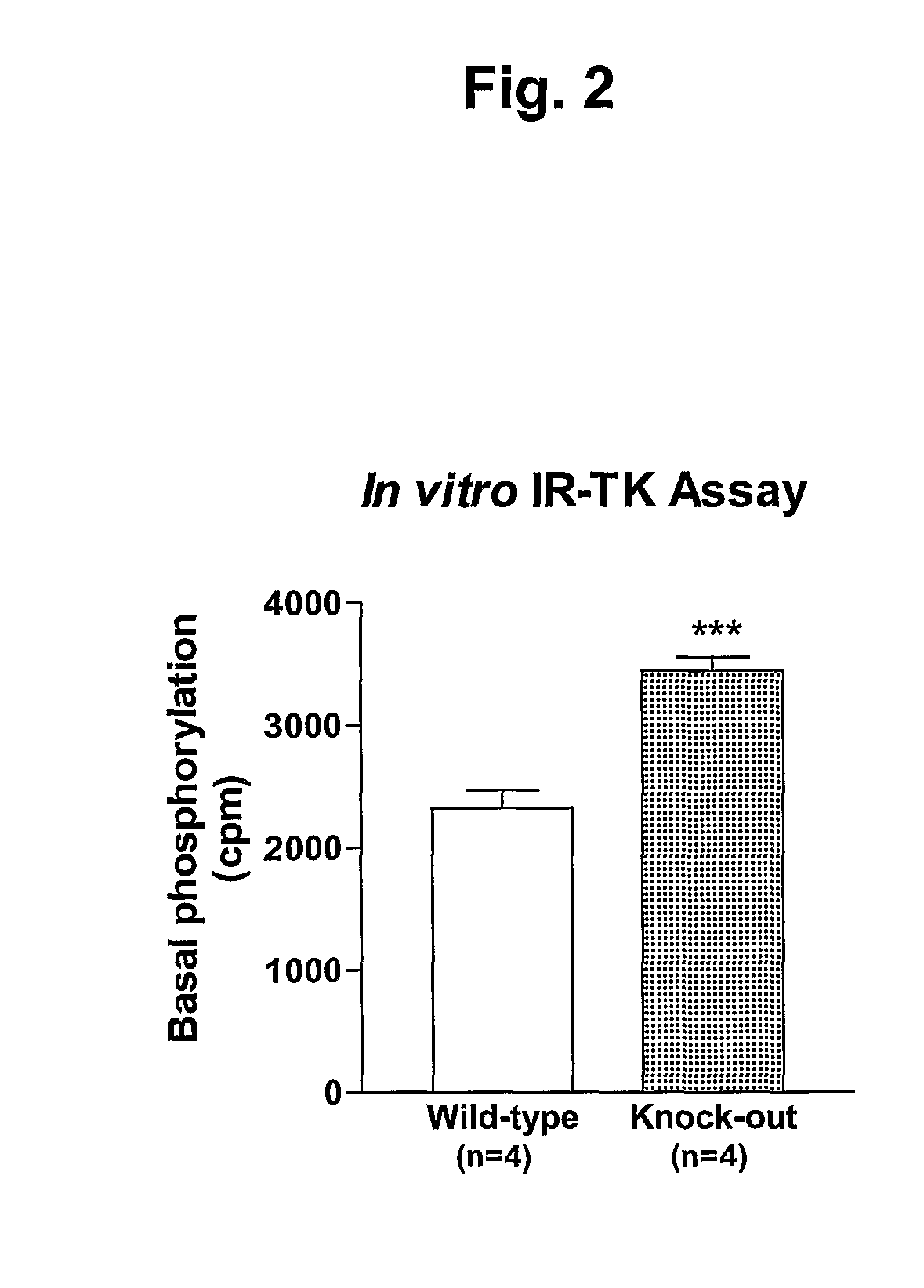Inhibition of alpha-2 hs glycoprotein (AHSG/fetuin) in obesity and insulin control of glucose homeostasis
a technology of alpha-2 hs glycoprotein and fetuin, which is applied in the direction of antibody medical ingredients, peptide sources, metabolic disorders, etc., can solve the problems of deficiency in insulin secretion or insulin action, prevent or diminish the effect of high-fat diet on body weight gain and/or insulin resistance, and inhibit the action of ahsg
- Summary
- Abstract
- Description
- Claims
- Application Information
AI Technical Summary
Benefits of technology
Problems solved by technology
Method used
Image
Examples
example i
AHSG a Specific Inhibitor of Insulin Receptor Autophosphorylation, Interacts with the Insulin Receptor
[0166] This Example appears in a paper published by the present inventors and their colleagues in Mol Cell Endocrinol, 2000,164:87-98, which is incorporated by reference in its entirety.
[0167] Human AHSG inhibits the mitogenic pathway without affecting the metabolic arm of insulin signal transduction. This study described the time-course and specificity of inhibition, AHSG interaction with IR and probable physiological role. In intact rat fibroblasts overexpressing the human IR (HIRc B), incubation of recombinant human AHSG (1.8 μM) (“rhAHSG”) inhibited insulin-induced IR autophosphorylation by over 80%. This inhibitory effect of rhAHSG on insulin-induced IR autophosphorylation was blunted by half in 60 min. Interestingly, rhAHSG at similar concentrations (0.9 or 1.8 μM), had no effect on EGF- or IGF-I-induced cognate receptor autophosphorylation. Anti-AHSG immunoprecipitates of r...
example ii
Materials Methods for Examples III-VII
Animals
[0170] Double homozygous Ahsg KO (Ahsg− / −) mice from a mixed background (Jahnen-Dechent, W. et al., J Biol Chem 272, 31496-31503 (1997))27 were backcrossed four generations into C57B1 / 6J. Offspring [Ahsg KO and WT littermates (Ahsg+ / +)] from the fourth generation of this breeding protocol were used for this study. Mice were housed on a 12-hour light / dark cycle and fed a standard rodent chow. All protocols for animal use and euthanasia were reviewed and approved by the Animal Investigation Committee of Wayne State University in accordance with NIH guidelines. For in vivo studies, animals were anesthetized with ketamine (80 mg / kg) and xylazine (5 mg / kg) IP, and insulin (0.1, 1 and 10 μM) was injected through the portal vein. Saline-injected animals served as controls. Liver and hindlimb muscles were excised 1 and 3 min later, respectively, as described earlier (Saad, M. J. A. et al., J Clin Invest 90, 1839-1849 (1992))5. Surgical procedu...
example iii
Increased Insulin Receptor (IR) Autophosphorylation and Tyrosine Kinase (TK) Activity
[0177] Since AHSG inhibits insulin-induced IR autophosphorylation and TK activity it was predicted that genetic ablation of AHSG would result in increased insulin-induced IR autophosphorylation and TK activity. To verify this, the present inventors examined both basal and insulin-induced IR autophosphorylation status in vitro (partially purified IR) and in vivo (liver and skeletal muscle).
[0178] IRs were partially purified by wheat germ agglutinin column chromatography from livers of age-, weight- and sex-matched KO and WT mice. IR autophosphorylation and TK activity were studied in vitro. A representative autoradiograph (from 4 separate experiments with IRs purified individually from livers of WT and KO mice, n=4 mice per group) of in vitro IR-β subunit autophosphorylation is illustrated (FIG. 1, upper panel). AHSG KO mice showed ˜4-fold increase in basal IR autophosphorylation compared to WT mic...
PUM
| Property | Measurement | Unit |
|---|---|---|
| Mass | aaaaa | aaaaa |
| Fraction | aaaaa | aaaaa |
| Electrical resistance | aaaaa | aaaaa |
Abstract
Description
Claims
Application Information
 Login to View More
Login to View More - R&D
- Intellectual Property
- Life Sciences
- Materials
- Tech Scout
- Unparalleled Data Quality
- Higher Quality Content
- 60% Fewer Hallucinations
Browse by: Latest US Patents, China's latest patents, Technical Efficacy Thesaurus, Application Domain, Technology Topic, Popular Technical Reports.
© 2025 PatSnap. All rights reserved.Legal|Privacy policy|Modern Slavery Act Transparency Statement|Sitemap|About US| Contact US: help@patsnap.com



